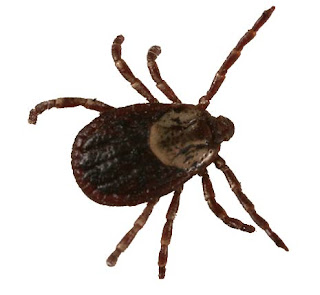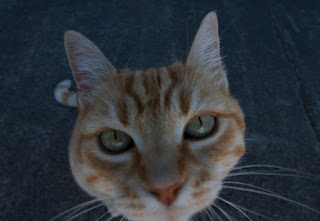Feline/ Canine Medicine - Diabetes
Why Is My Pet Diabetic?
A Diabetic Pet Does Not Have Enough Insulin The cells cannot receive glucose from the blood because there is no insulin to allow it and the body is unable to detect glucose in the blood. Even though there is plenty of glucose in the blood, the body is fooled into thinking it is starving, leading to the protein, starch, and fat breaking down as happens during starvation. In fact, by now, there is a large excess of glucose as all resources have been mobilized. Still, without insulin, this bounty of fuel cannot get to the tissues that need it.
The normal kidney is able to prevent glucose loss in urine but, in a diabetic pet, there is so much glucose in the blood that the kidney is overwhelmed and glucose spills into the urine and is lost. Glucose is able to draw water with it into the urine. This leads to excess urine production and excess thirst to keep up with the fluid loss.
 As a results the main clinical signs of diabetes mellitus are:
As a results the main clinical signs of diabetes mellitus are:
The normal kidney is able to prevent glucose loss in urine but, in a diabetic pet, there is so much glucose in the blood that the kidney is overwhelmed and glucose spills into the urine and is lost. Glucose is able to draw water with it into the urine. This leads to excess urine production and excess thirst to keep up with the fluid loss.
 As a results the main clinical signs of diabetes mellitus are:
As a results the main clinical signs of diabetes mellitus are:- Excessive eating
- Excessive drinking
- Excessive urination
- Weight loss
Virtually all dogs have insulin dependent diabetes and must be treated with insulin.
Most cats have non-insulin dependent diabetes. This might suggest that most cats can get away without insulin injections but that is not the case at all. Instead, for cats, there is potential for the diabetes to actually resolve if the pancreas improves its insulin-secreting ability. Insulin injections are needed to treat most diabetic cats but for some cats, the situation is mild enough for oral medication to suffice. Good glucose control and proper diet can resolve the diabetes in some lucky cats but virtually never in diabetic dogs.
What Happens Once a Diagnosis Is Reached?
Technique To administer Insulin (your pet needs to eat before you can administer insulin)
Prepare the insulin for injection:
What Happens Once a Diagnosis Is Reached?
- Insulin: Your veterinarian will discuss insulin types and initial dose. There are several types of insulins and it is not possible to know how much insulin your individual pet will ultimately require so you will start your pet on a conservative dose based on current studies. Most pets require injections approximately 12 hours apart, following a meal. You will need to learn how to give insulin injections to your pet.
- Learn how to give insulin: Insulin is given by injection under the skin (subcutaneous). You will purchase your insulin and insulin syringes from a pharmacy of your choice and bring them with you to your appointment where a pet nurse will teach you how to administer the insulin safely. You may be surprised to find that the most common reason for a pet having difficulty achieving regulation is that the owner is not giving the injections properly. Be sure you know how to hold the bottle, manipulate the syringe, hold your pet, and give the injection. Some situations require that the pet be hospitalized for a few days for the initial regulation, but most of the time your pet will be at home receiving injections shortly after the diagnosis has been reached. Injections may seem intimidating at first but most pet owners are surprised at how easy this turns out to be.
- Disposal of syringes: You have 2 options for disposal of the used syringes in Andover. Andover does not have curbside disposal. There are several disposal drop off facilities in Andover or some people will chose to use our medical waste disposal company (ask your pet nurse for the charge). Some other communities offer a free drop off service. Here is a link for disposal sites in MA http://www.bd.com/resource.aspx?idx=9573
- Insulin Shock: If your pet receives too much insulin for their needs, they may have a life threatening complication and go into insulin shock. If your pet appears wobbly or drunken, the blood sugar level may have dropped too low. This occurs after an insulin overdose. First try to get your pet to eat. If the pet will not eat, administer light Karo syrup, honey, or even sugar-water at a dose of one tablespoon per 5 pounds. If no improvement occurs, immediately see your veterinarian for emergency treatment.
- Diet: Diabetic regulation is achieved via a balance of diet, exercise, and insulin. There are therapeutic diets that are ideal to help regulate your diabetic pet. The most up-to-date choice for cats is a low carbohydrate high protein diet. These diets promote weight loss in obese diabetics and are available in both canned and dry formulations.
- -For dogs, high fiber diets are still in favor, as fiber seems to help sensitize the pet to insulin. Talk to your veterinarian to select an appropriate choice for your pet.
- -Avoid soft-moist diets as sugars are used as preservatives. Avoid breads and sweet treats. If it is not possible to change the pet's diet, then regulation will just have to be worked out around whatever the pet will eat.
Prepare the insulin for injection:
- Gently roll the vial between your hands to mix evenly. Do not shake.
- Remove the needle cap and inject the needle into the cork of the insulin bottle
- Tip the bottle, with the needle in place, upside down and pull the plunger to draw up the correct amount of insulin.
- Double check the dosage making sure air bubbles are not present leading to inaccurate dosing.
- Replace the cap on the needle to avoid accidents.
Giving the Insulin Injection
- Holding the syringe in your dominant hand tent your pet's skin between the shoulders with your thumb and index finger. Your fingers should be about an inch apart. Choose different spots for each injection.
- Insert the needle through the skin using a 45 degree angle. Depress the plunger to dispense the dose under the skin and not in the fur.
- Remove the needle and recap
- Reward your pet for being so brave:)
 |
| 176 River Road Andover, MA 01810 www.riverroadveterinaryhospital.com |









